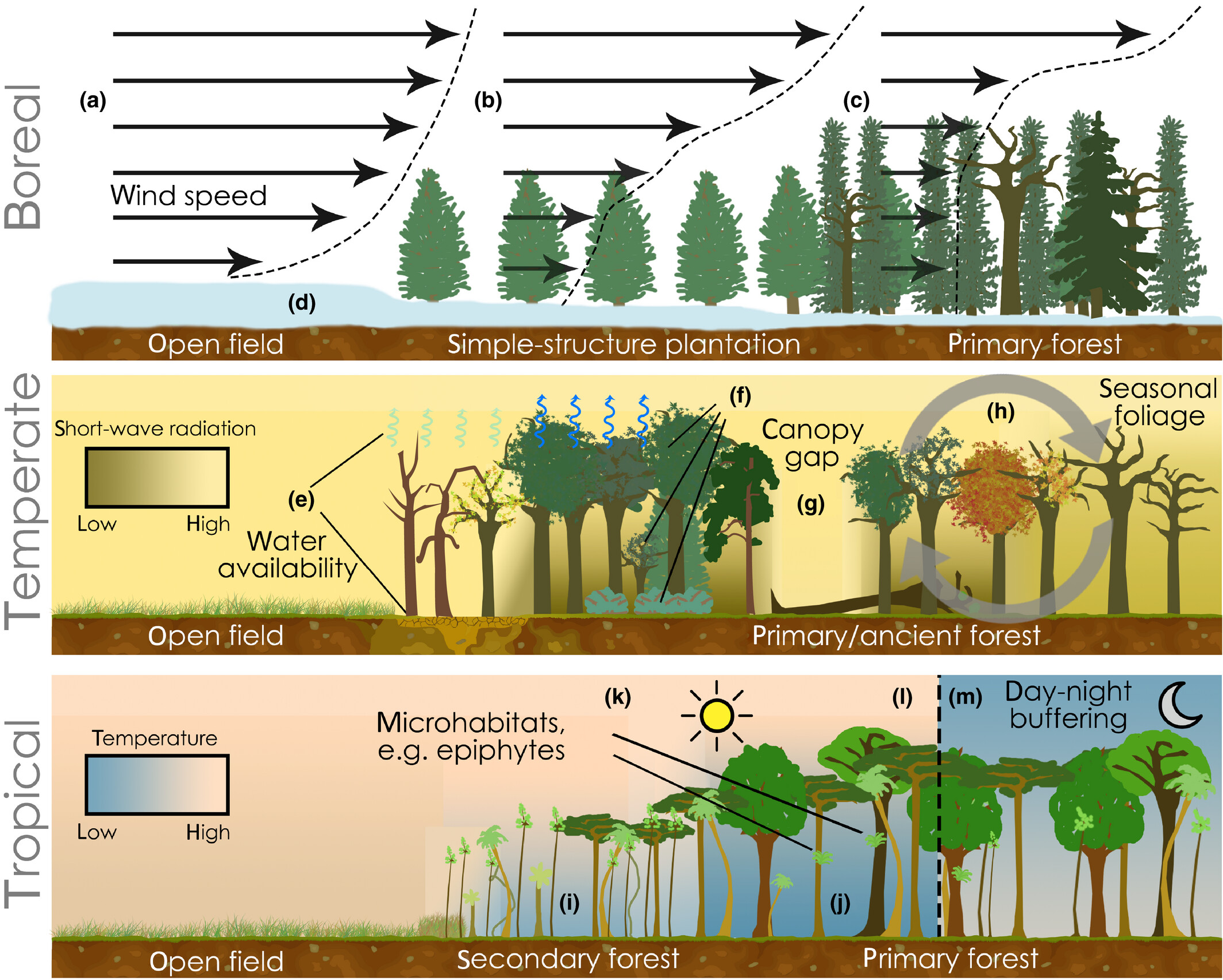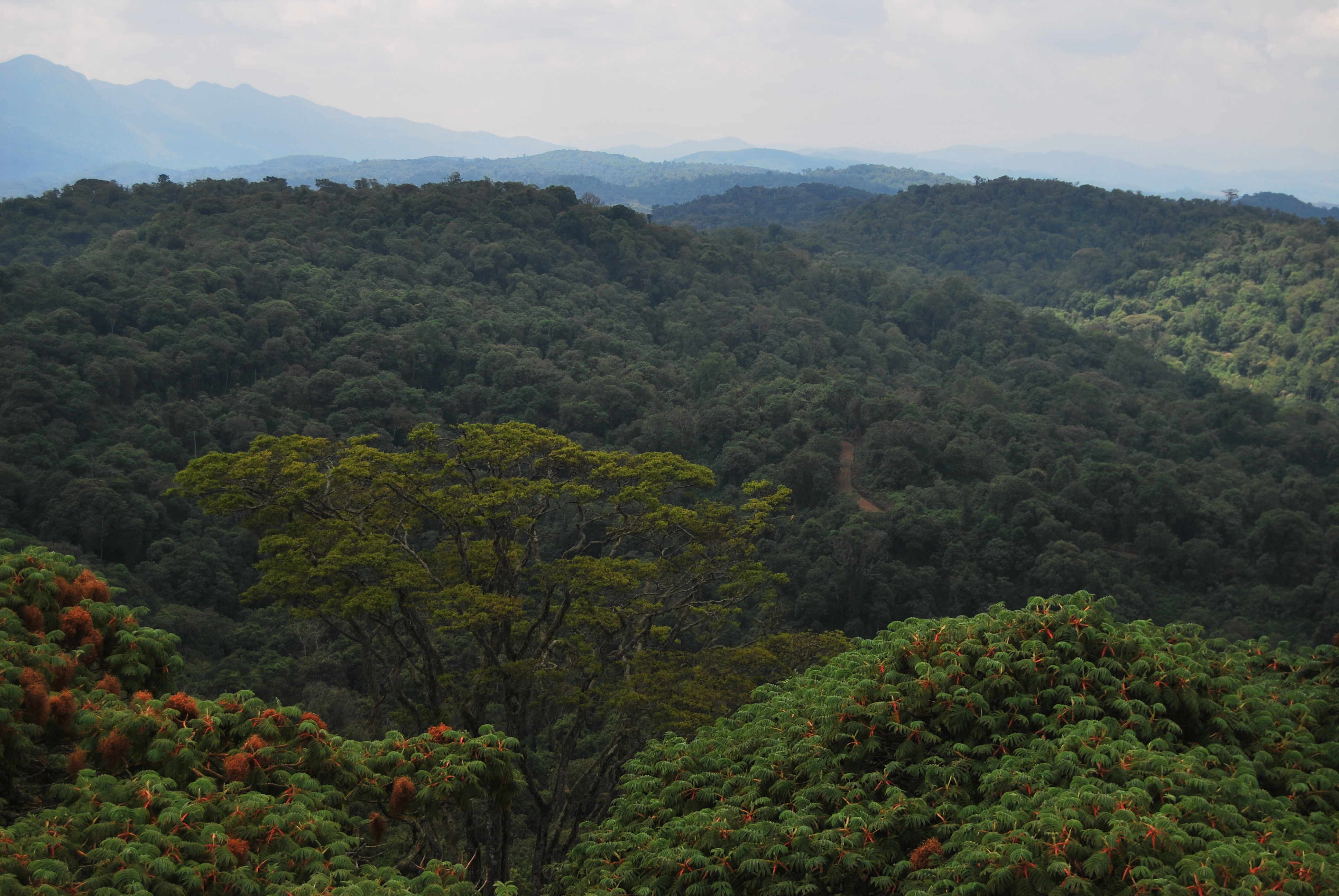Climate change beneath the World’s forests: Tropical forests are experiencing entirely new temperature regimes.
Published in Ecology & Evolution and Plant Science

Tropical forests are incredible reservoirs of biodiversity, and home to many of the world’s highly specialised species. Yet, along with increasing pressures from deforestation, fragmentation, and degradation, tropical forests are increasingly under threat from climate change. We show that recent small increases in below-canopy temperature have led to highly novel temperature regimes across most of the tropics.
Currently, there is very little understanding of how microclimates beneath the tropical forest canopy are changing in response to climate change. Temperature is an important constraint on species distributions and ecological function (Deutsch et al., 2008; Parmesan & Yohe, 2003). However, temperature records used to assess climate changes are typically recorded inside well-ventilated protective shields placed 2 m above the ground, in open habitats carefully selected to be unaffected by local microclimatic influence (Bramer et al., 2018). These records are not reflective of the climate conditions experienced by the majority of forest-dwelling organisms.
To address this critical knowledge gap, we used a recently developed mechanistic microclimate model to derive below-canopy, near-ground, hourly temperatures across the world’s tropical forest regions (approximately 9.3 million km2) over a thirty year period (1990 to 2019). Through a global collaboration of researchers, we were able to validate these microclimate results using hourly temperature records collected by microclimate loggers across the global tropics, including Brazil, Peru, Uganda, the Democratic Republic of the Congo, and Malaysia. This collaboration was made possible by the recent development of the SoilTemp database (Lembrechts et al., 2020).
Below forest canopies, less sunlight reaches the understory, the absorb and re-emit thermal radiation and the vegetation undergoes evapotranspiration. Resultantly, diurnal temperature fluctuations are much reduced compared to open habitats and resulting in cooler below-canopy maximum temperatures, warmer minimum temperatures, and lower seasonal and interannual variability (De Frenne et al., 2019). The tropics also have fairly stable temperatures year round. Ultimately, this means that species that live in forests experience remarkably little temperature variation and have narrow thermal niches (Trew & Maclean, 2021). They are thus very likely to be sensitive to even small changes in their environment.

So, instead of absolute change in temperatures over time, we calculated the novelty of recent temperature regimes as a more biologically meaningful metric of change for tropical species. To do this, we derived 7 bioclimatic variables from our hourly temperature results and for each bioclimatic variable, novelty is simply a measure of the fraction of conditions in recent years (2005 to 2019) that lies outside the range conditions experienced historically (1990 to 2004).

Novelty is widespread across tropical forests.
Our results show that climate change is already impacting vast areas of pristine tropical forest globally. Pronounced shifts in below-canopy temperature regimes have occurred in a significant proportion of tropical forests, including globally important national parks, indigenous reserves, and large tracts of ecologically unfragmented areas (sometimes referred to as wilderness areas). We show that between 2005 and 2019 most of the world’s undisturbed tropical forests experienced temperature conditions at least partially outside the range of historic conditions. Worryingly, many areas, especially low-lying continental interiors, had transitioned to almost entirely new temperature averages. These are locations where there is limited opportunity for species to access elevational climate gradients if thermal limits are breached.

Protecting refugia is critical.
We also identified tropical forests where temperature novelty has been low despite ongoing climatic change. Although many are highly fragmented and dispersed across continents, especially in Africa, these tropical forests are the best candidates to act as climate refugia and are crucial to conservation efforts.To provide species with the best chance to adapt to these changes, these forests must be protected from additional human-induced threats.
Stable climates are more sensitive to long-term change.
Research has shown that warming due to climate change has been slower under forest canopies (De Lombaerde et al., 2022). However, we show that even incremental increases in below-canopy temperature regimes in tropical forests can result in entirely novel temperature regimes. We show that recent small increases in below-canopy temperature have led to highly novel temperature regimes across most of the tropics.
Conclusion.
Our study challenges the prevailing notion that tropical forest canopies could mitigate climate change impacts and it helps us understand how to prioritise conservation of these key areas of biodiversity effectively. Notwithstanding the fundamental need for global carbon emission reductions, the prioritisation and protection of refugia and the restoration of highly threatened forests is vital to mitigate further damage to global tropical forest ecosystems. It is paramount that distant, wealth-related drivers of deforestation and degradation are addressed and that the future of those forests acting as climate refugia is secured by effecting legal protection and/or empowering indigenous communities.

References.
Bramer, I., Anderson, B. J., Bennie, J., Bladon, A. J., De Frenne, P., Hemming, D., . . . Gillingham, P. K. (2018). Advances in Monitoring and Modelling Climate at Ecologically Relevant Scales. In (pp. 101-161): Elsevier.
De Frenne, P., Zellweger, F., Rodríguez-Sánchez, F., Scheffers, B. R., Hylander, K., Luoto, M., . . . Lenoir, J. (2019). Global buffering of temperatures under forest canopies. Nature Ecology & Evolution, 3(5), 744-749. doi:10.1038/s41559-019-0842-1
De Frenne, P., Lenoir, J., Luoto, M., Scheffers, B. R., Zellweger, F., Aalto, J., . . . Hylander, K. (2021). Forest microclimates and climate change: Importance, drivers and future research agenda. Global Change Biology, 27(11), 2279-2297. doi:https://doi.org/10.1111/gcb.15569
De Lombaerde, E., Vangansbeke, P., Lenoir, J., Van Meerbeek, K., Lembrechts, J., Rodríguez-Sánchez, F., . . . De Frenne, P. (2022). Maintaining forest cover to enhance temperature buffering under future climate change. Science of The Total Environment, 810, 151338. doi:10.1016/j.scitotenv.2021.151338
Deutsch, C. A., Tewksbury, J. J., Huey, R. B., Sheldon, K. S., Ghalambor, C. K., Haak, D. C., & Martin, P. R. (2008). Impacts of climate warming on terrestrial ectotherms across latitude. Proceedings of the National Academy of Sciences, 105(18), 6668-6672. doi:10.1073/pnas.0709472105
Lembrechts, J. J., Aalto, J., Ashcroft, M. B., De Frenne, P., Kopecký, M., Lenoir, J., . . . Nijs, I. (2020). SoilTemp: a global database of near-surface temperature. Global Change Biology, 28, 3110– 3144. doi:0.1111/gcb.16060
Parmesan, C., & Yohe, G. (2003). A globally coherent fingerprint of climate change impacts across natural systems. Nature, 421(6918), 37-42.
Trew, B. T., Edwards, D. P., Lees, A. C., Klinges, D. H., Early, R., Svátek, M., . . . Maclean, I. M. D. (2024). Novel temperatures are already widespread beneath the world’s tropical forest canopies. Nature Climate Change, 1-7.
Trew, B. T., & Maclean, I. M. D. (2021). Vulnerability of global biodiversity hotspots to climate change. Global Ecology and Biogeography, 30(4), 768-783.
Follow the Topic
-
Nature Climate Change

A monthly journal dedicated to publishing the most significant and cutting-edge research on the nature, underlying causes or impacts of global climate change and its implications for the economy, policy and the world at large.




Please sign in or register for FREE
If you are a registered user on Research Communities by Springer Nature, please sign in